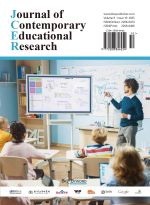Narrowing Regional Gaps: A Study on the Strategies for Balanced Development of Regional Education in China
Abstract
By comprehensively analyzing the current status of education development and the achievements of economic development in China, this paper reveals the synergistic effect between the overall improvement of education levels and economic growth. The paper points out that although the increase in educational investment has provided talent support for economic development, the imbalance in regional education development still exists. Furthermore, the paper explores the two-way promotion mechanism between education and economic development, and proposes a series of strategies, including balanced layout, targeted support, and innovation-driven development, to achieve the coordinated and balanced development of regional education and narrow regional gaps. These strategies aim to optimize the allocation of educational resources, improve the quality of education, and promote the all-round progress of the economy and society.
References
Liu F, Li N, 2023, Practical Exploration and Reflection on Promoting the High-quality and Balanced Development of Regional Education. Innovative Talent Education, (02): 6–11.
Dong BY, 2020, Research on the Path of Building Golden Courses in Colleges and Universities——Taking the Course of International Trade Practice as an Example. Journal of Jilin Business and Technology College, 36(4): 108–110.
Ministry of Education of the People’s Republic of China, 2024, Statistical Express of the Implementation of National Education Expenditure in 2023, viewed September 23, 2025, http://www.moe.gov.cn/jyb_xwfb/gzdt_gzdt/s5987/202407/t20240722_1142296.html
Zhang WP, Wang QH, 2007, Economic Analysis of the Expansion of Higher Education Scale. Journal of East China Normal University (Educational Sciences Edition), 25(2): 40–45.
Ministry of Education of the People’s Republic of China, 2024, Statistical Bulletin on the Development of National Education Undertakings in 2023, viewed September 23, 2025, http://www.moe.gov.cn/jyb_sjzl/sjzl_fztjgb/202410/t20241024_1159002.html
The State Council of the People’s Republic of China, 2025, National Bureau of Statistics: The Economic Operation in 2024 was Stable with Progress, and the Main Development Goals were Achieved Smoothly, viewed September 23, 2025, https://www.gov.cn/lianbo/bumen/202501/content_6999261.htm
Li HZ, Fraumeni BM, 2024, Measurement of China’s Human Capital and Its Effect on Economic Growth (1985–2022). Economic Research Journal, (6): 48–63.
Ren JR, 2020, Research on the Impact of Education Investment and the Inflow of International Talents on Economic Growth. China Economic & Trade Herald, (23): 28–32.
Liu Y, 2012, Research on the Fiscal Investment Model of Higher Education in China, dissertation, Dongbei University of Finance and Economics.
Ministry of Education of the People’s Republic of China, 2024, Promote the High-quality and Full Employment of College Graduates, viewed September 23, 2025, http://www.moe.gov.cn/jyb_xwfb/xw_zt/moe_357/2024/2024_zt01/mtjj/202408/t20240829_1147779.html
Ministry of Education of the People’s Republic of China, 2024, Ministry of Education, National Bureau of Statistics, and Ministry of Finance: Statistical Announcement on the Implementation of National Education Expenditure in 2023, viewed September 23, 2025, http://www.moe.gov.cn/srcsite/A05/s3040/202412/t20241219_1167656.html
Dong YM, 2024, Optimizing the Funding Work of Rural Schools to Promote the Balanced Development of Regional Education. Studies of Finance and Accounting in Education, 35(1): 67–69 + 95.

